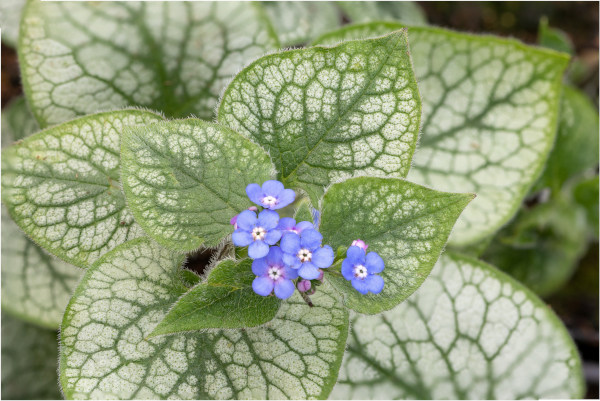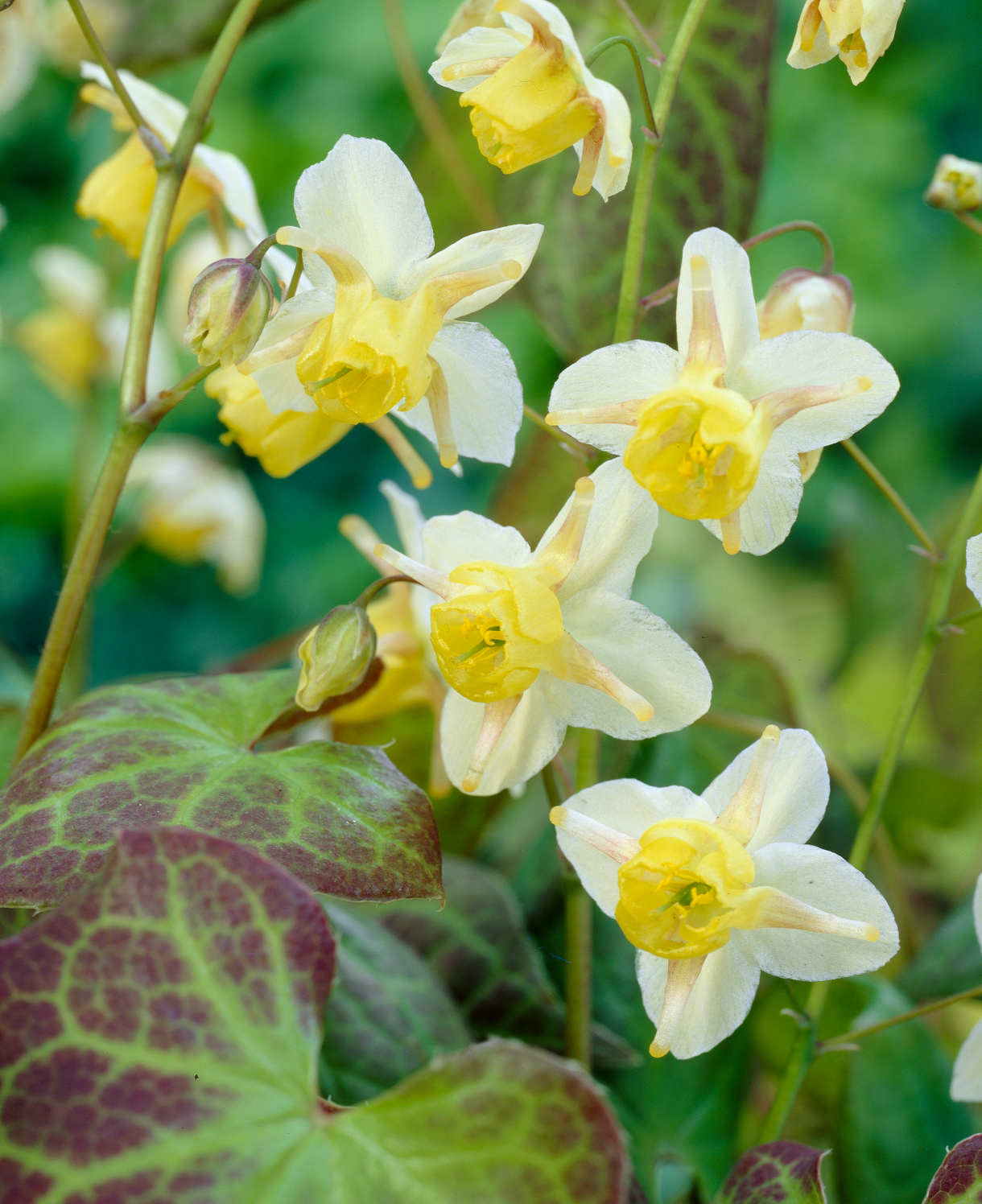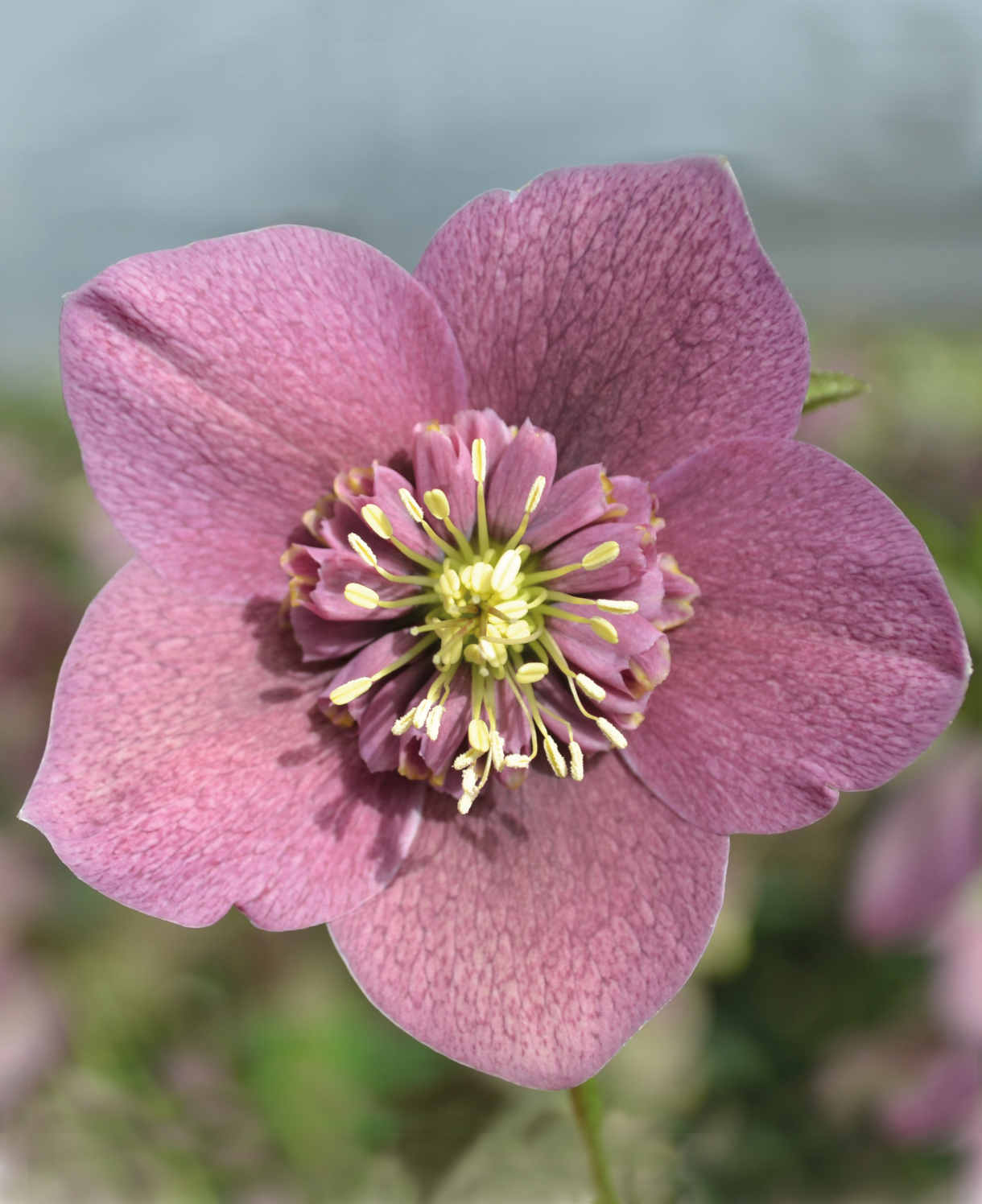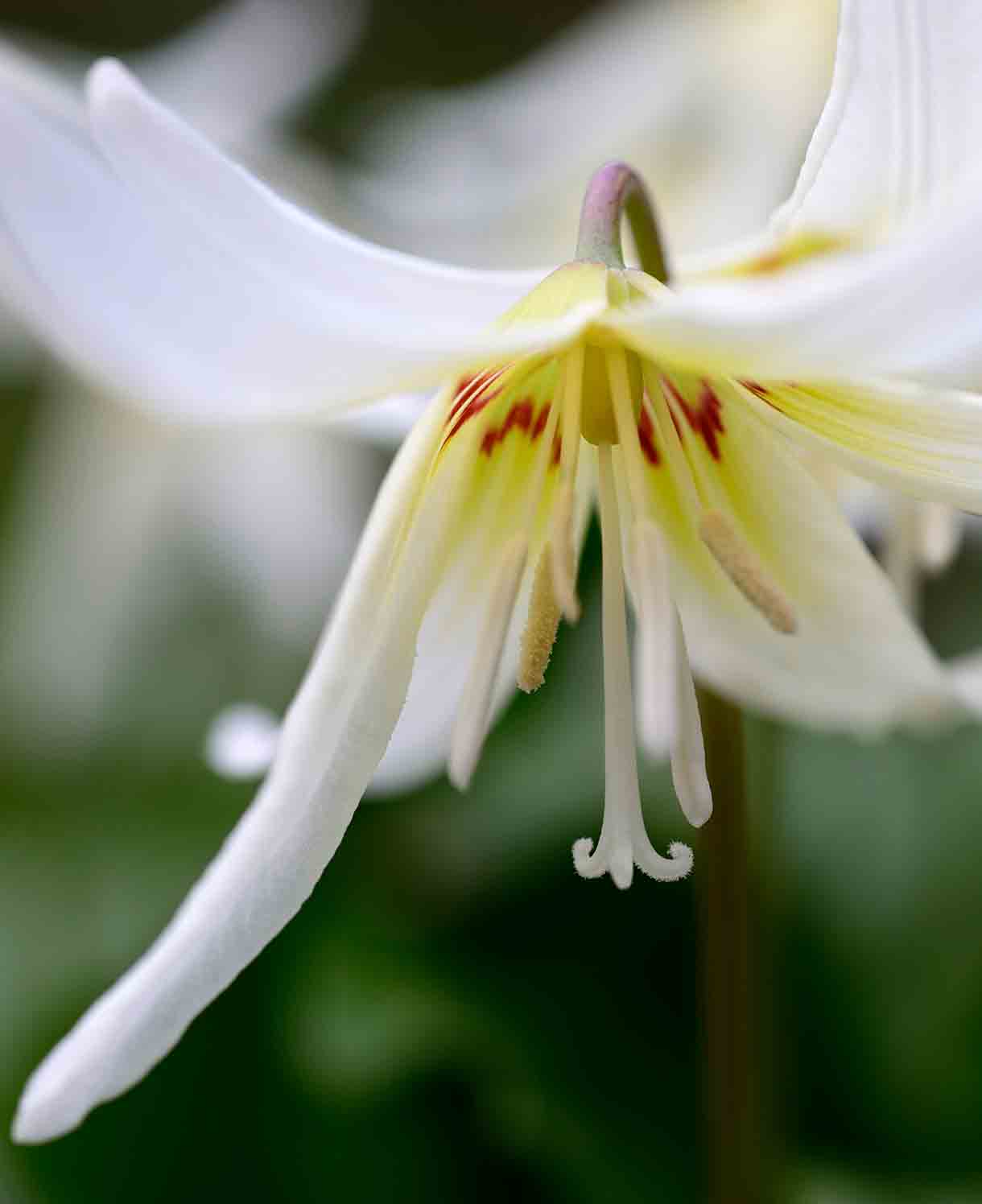How to grow Brunnera
Sometimes known as perennial forget-me-not, this member of the borage family is a deservedly popular plant for those shadier spots in the garden. Its heart-shaped leaves are often attractively variegated, and remain untroubled by pests due to a rough, unpalatable texture. With a low, spreading habit and a tough, undemanding nature, the plant can be relied upon to form a lush, ground-covering drift. From mid to late spring a glorious, airy haze of small blue flowers adds further to the appeal, brightening up what may otherwise be a dark and dingy spot.
There are just three species of brunnera, the most widely grown being Brunnera macrophylla, or Siberian bugloss. Originating from Caucasus, this species has been bred to create many different cultivars.

Key Information
Position
Soil Conditions
Hardiness


Where & when to plant Brunnera
For best results, plant in autumn or spring. An autumn planting can be done by those gardening in mild conditions (and broadly speaking, this is the southern half of the UK). For those liable to cold winters, it is best to wait until spring (generally the northern half of the UK). Planting can also be carried out in summer, though be prepared to water regularly.
Shade-loving brunnera is ideal for covering the ground beneath trees and shrubs, providing interest at the foot of a hedge, lining a shaded path, or weaving through a dimly lit border. It can also be grown in a container and is useful for north-facing balconies or patios.
How to plant Brunnera
- For planting in the garden, dig the soil area removing any large stones and weeds and breaking up any lumps. You don’t have to improve the soil with organic matter such as manure or garden compost, though it will give you larger plants if you do.
- Rake level and firm with your heels. Rake level again.
- Water plants well and allow to drain before planting.
- A good tip is to dig a hole twice the size of the root-ball. Fill with water and allow to drain before placing in the plant.
- Place the plant in the hole, ensuring the top of the root ball sits level with the surface of the soil. Too low and the plant may rot, too high and the roots can dry out.
- Backfill with soil and firm in gently with your foot.
- Soak well with water.
- Mulch around the base with well-rotted organic matter.
- For planting in containers, choose an appropriately sized pot with plenty of drainage holes in the bottom. You may wish to grow your brunnera in a pot of its own (in which case choose one 5-10cm larger than the current diameter of the rootball) or in a larger mixed container.
- If you are using a large or heavy pot, it can be a good idea to fill and plant it in situ to save yourself the trouble of moving once full.
- Use a good quality potting compost with some horticultural grit mixed in and, if not already present (check the labelling on the bag) some slow-release fertiliser granules.
- Start by partially filling the pot with compost; enough so that when placed on it the upper surface of the root ball is about 3cm lower than the top of the pot.
- Fill around the plant with compost, firming down with your fingers then adding a little more so it is held tight.
- Pick up the container (if you can!) and lightly tap on the potting bench or ground a few times to help further settle the compost around the plant.
- Soak well with water.
- A mulch with horticultural grit will look attractive and help to prevent a ‘cap’ or crust forming on the top of the compost (something container plants can suffer due to the artificial nature of their watering).

What to plant with Brunnera
Knit this spring-flowering, shade-loving perennial together with similarly inclined companions for a gloom-busting tapestry of colour, texture, and form. Think periwinkle, hellebores, sweet woodruff, violets, and early flowering forms of epimedium and polemonium. Spring bulbs such as chionodoxa and erythronium will add a dash of fleeting, twinkling colour, while the foliage of hostas and ferns provides companionship beyond spring.



How to care for Brunnera
Pruning and Deadheading
Brunnera naturally dies back for winter. No pruning is necessary, though to keep things neat you can clear away any leaves that remain when the new growth begins to emerge in spring. The occasional removing of brown or tatty leaves throughout the growing season keeps plants looking tidy and respectable, though is by no means essential.
Most brunnera plants will readily self-seed in the surrounding area. If this is not wanted, simply remove spent flowerheads before they have a chance to set seed.
Watering
Brunnera in the ground should be given a good watering in on planting, followed by a thick layer of mulch to lock the moisture in (see next section for more on this). Water again a few more times in the coming weeks, after which they should be largely self-sufficient in all but the hottest, driest weather.
Brunnera in a container requires regular watering throughout the growing season. To avoid overwatering (brunnera dislikes being too soggy), a good rule of thumb is to allow the top couple of centimetres to dry out between soakings. To check this, wiggle your finger down into the compost until you feel moisture. Be aware that in the height of summer containers can need watering every day, particularly smaller ones.
Feeding
On healthy, fertile soil, a mulch of well-rotted organic matter (i.e., a layer of leaf mould, manure, or garden compost applied to the soil around the plant) should provide enough nutrients for your brunnera. This has the added benefit of suppressing weeds and locking in moisture. Mulch when planting, and then again each year in autumn or spring.
If you garden on poor soil or your brunnera looks in need of a boost, applying a granular general-purpose feed to the surface of the soil and lightly working in can reap benefits. This is known as a top dress and is best done in spring.
Container-grown plants are different as they rely solely on the gardener for nutrition. Get off to a flying start by making sure you use a good quality compost with slow-release granules mixed in. These generally provide nutrients for around 6 to 8 weeks, after which you’ll need to apply a liquid feed every 2-3 weeks until the end of the growing season (i.e., September-ish).
Remember to repot your brunnera every few years into a slightly larger pot using fresh compost. When it has reached full size, instead of repotting simply scrape away the top few centimetres of compost and replace with a fresh mix of compost and slow-release granules.
Cold Protection
Brunnera is hardy enough to withstand winter throughout most of the UK without the need for any special attention. Simply avoid planting anywhere prone to winter waterlogging.
Like all plants, those grown in containers can be more vulnerable to cold damage. If kept in a cold, exposed position it can be worth wrapping the container in hessian, fleece, or bubblewrap. As well as insulating the roots this helps prevent the pot cracking.
Pests and Diseases
Brunnera is considered trouble free.
How to propagate Brunnera
The quickest and easiest way to propagate brunnera is by lifting and dividing established plants in early spring. As well as producing new plants, this breathes new life into existing clumps that may be starting to tire. Aim to leave a 2-3 year recovery period each time you do this.
- Choose a day when the soil is not frozen or waterlogged.
- Dig the plant out of the ground.
- Shake off any excess soil.
- Separate the plant into sections using either swift, cutting blows with a sharp spade, or two forks inserted back-to-back with tines touching, handles then pushed together to prise the plant apart.
- Discard old, damaged, or surplus pieces, keeping healthy, vigorous material.
- Replant decent-sized pieces where desired, and any smaller bits can be potted up.
- Water well until fully established.
* Many plants carry Plant Breeders Rights and cannot be propagated for commercial purposes.
Common Brunnera question
- Is brunnera easy to grow?
Planted in the right place, brunnera needs very little attention other than to be lifted and divided every few years. - Will brunnera spread?
Yes, this plant spreads relatively quickly via underground rhizomes. For this reason, it is an effective and popular ground cover plant.
- Should brunnera be cut back in autumn?
If you wish, though it will die back naturally if left alone. See our ‘Pruning and deadheading’ section for more information. - Does brunnera need lots of water?
Aside from a few soakings during its first few weeks in the ground, brunnera can be left to its own devices in all but the hottest, driest weather. Drought tolerance increases as the plant matures.
Container-grown brunnera, on the other hand, should be watered regularly throughout the growing season. - Can you deadhead brunnera?
Spent flowerheads can be removed to prevent self-seeding, however the plant is unlikely to produce a second flush of flowers.




